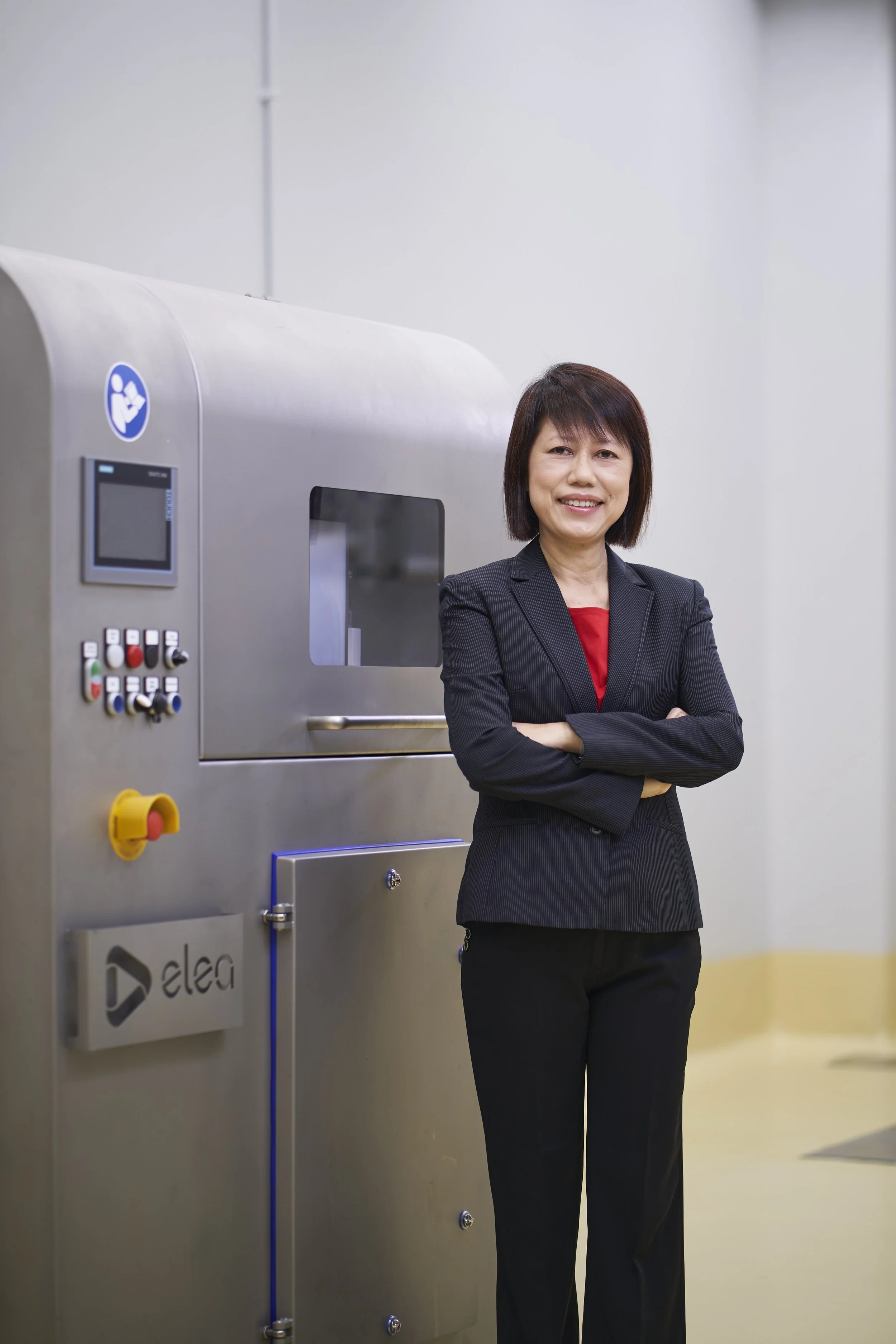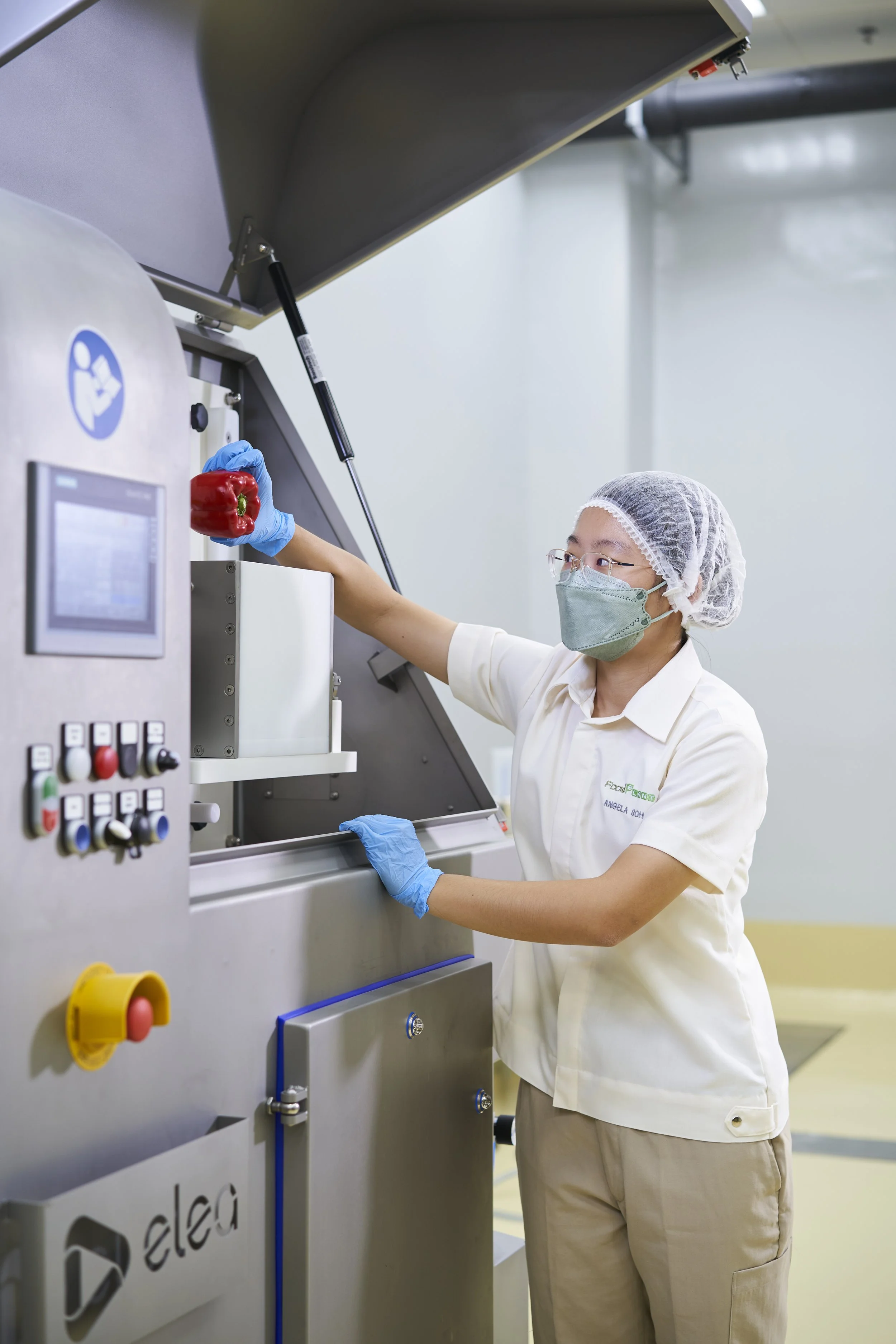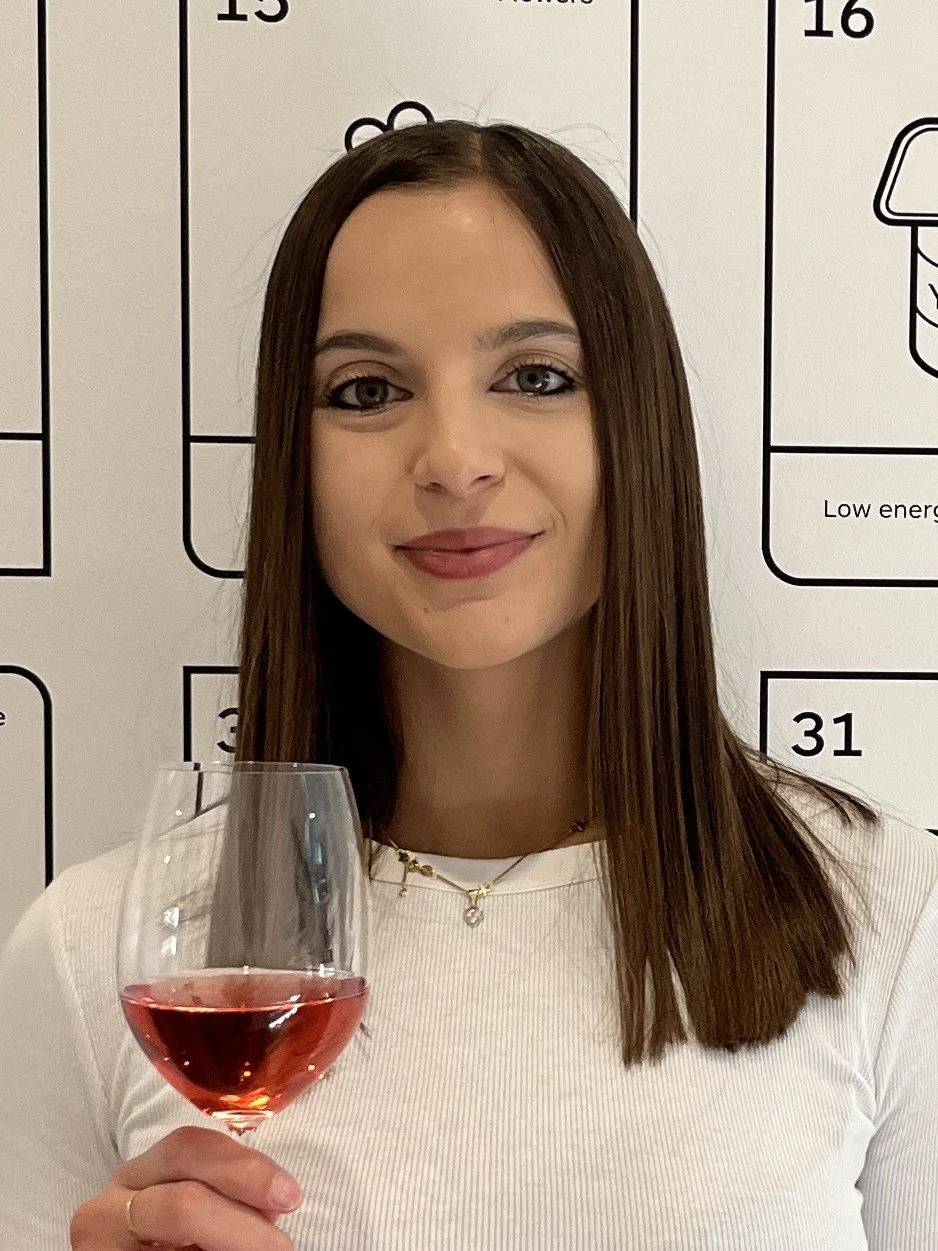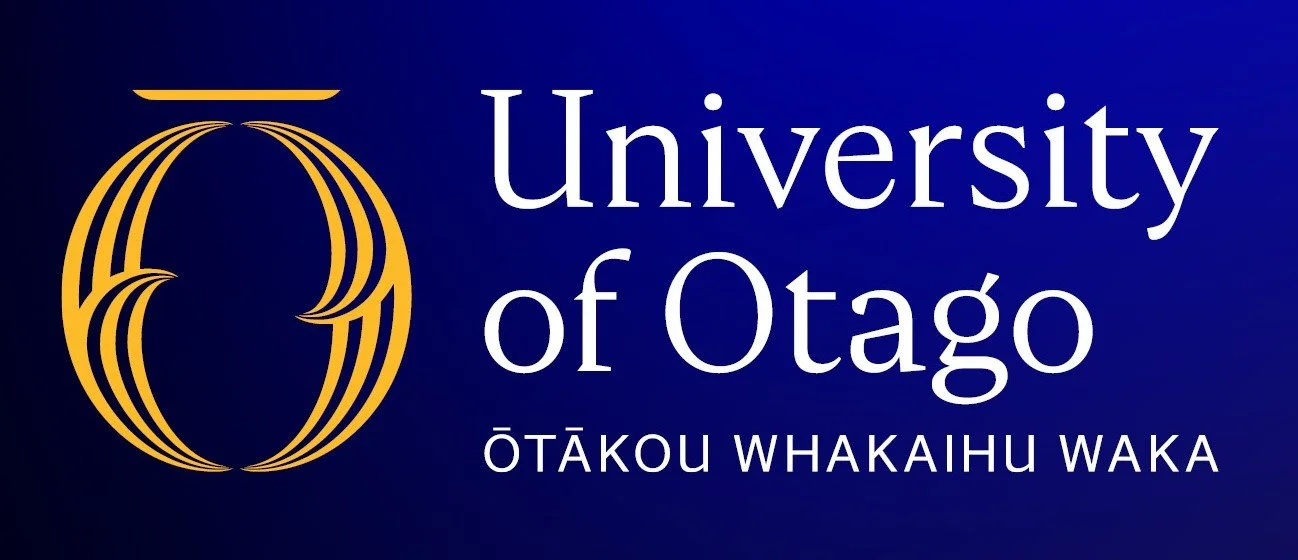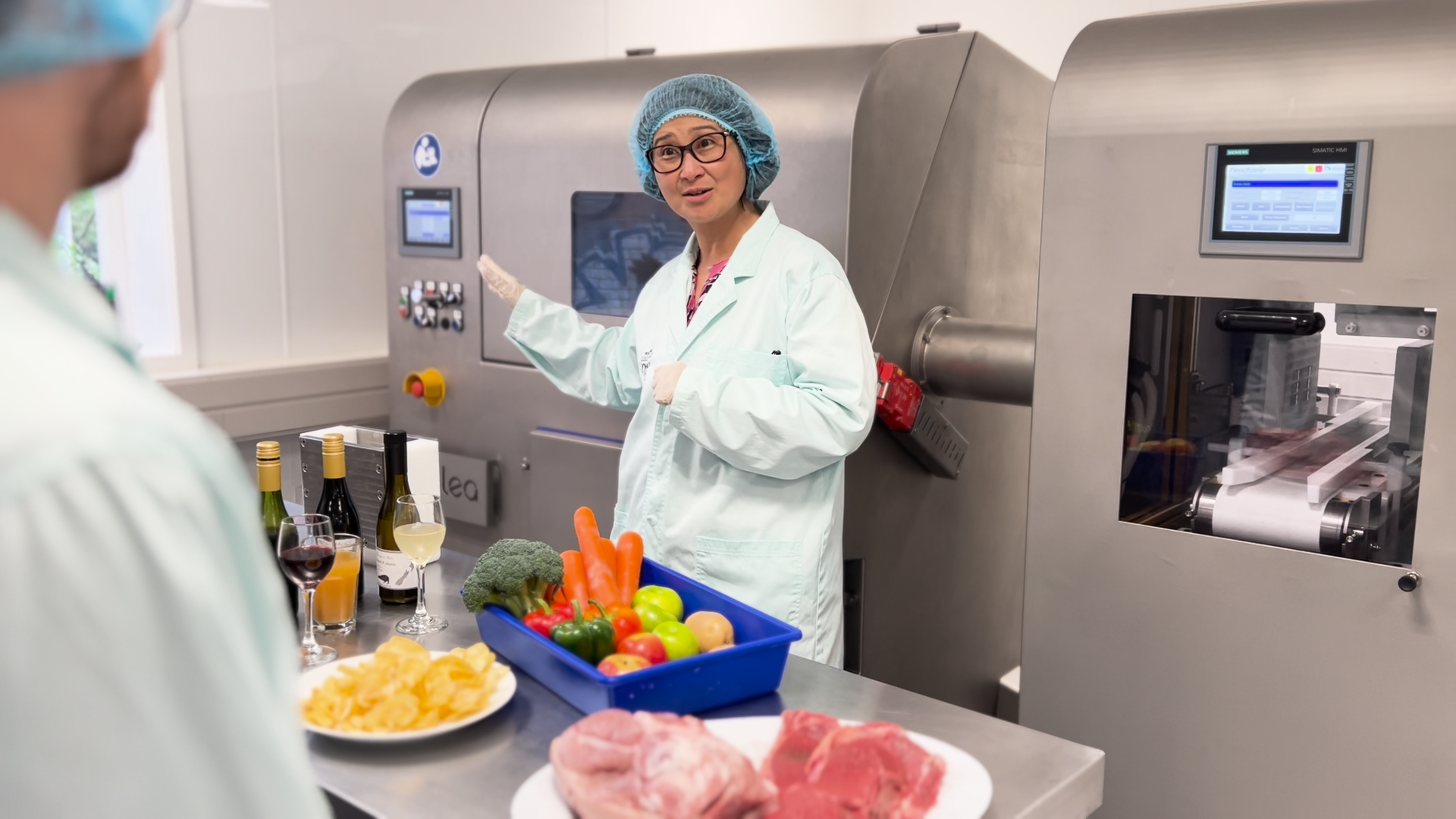Innovation stories
Collaborating with our research & development partners
Collaboration Drives Innovation
Every breakthrough at Elea starts with collaboration. In our innovation stories, we highlight how partnerships with leading research institutions and scientists around the world have pushed the boundaries of what PEF technology can achieve.
From pioneering new applications to co-developing cutting-edge equipment, these stories show how shared vision turns scientific discovery into real-world innovation. Explore the journeys that are shaping the future of PEF technology.
FoodPlant, Singapore
FoodPlant and Elea partner to introduce Pulsed Electric Field (PEF) technology at Singapore’s first shared food processing facility.
A Strategic Facility for Food Innovation
FoodPlant, a subsidiary of the Singapore Institute of Technology (SIT) and supported by Enterprise Singapore and JTC Corporation, is Singapore’s first shared facility for small-batch food production. It plays a key role in advancing innovation within the food industry by helping start-ups, SMEs, and larger companies test, scale, and commercialise novel food products. The facility offers pilot-scale equipment, technical expertise, and process development support to accelerate product development.
Beyond its innovation capabilities, FoodPlant is also a hub for industry education and capability building. It conducts technology-focused training programmes and offers hands-on learning opportunities for both professionals and SIT undergraduates, contributing to the growth and resilience of Singapore’s food ecosystem.
Dr LIM Bee Gim, Founding CEO and now Technical Advisor at FoodPlant.
Introducing Pulsed Electric Field (PEF) Technology
As part of its founding vision to offer advanced processing capabilities, FoodPlant integrated Pulsed Electric Field (PEF) technology into its suite of equipment from the early planning stage.
“I was first introduced to Elea’s PEF technology while evaluating advanced processes that could expand FoodPlant’s capabilities,”
shares Associate Professor Lim Bee Gim, Founding CEO and now Technical Advisor at FoodPlant.
Dr Lim, who also serves as a faculty member at SIT, explains her keen interest in PEF:
“My interest in pulsed electric field (PEF) technology stems from its potential to offer energy-efficient, clean-label, and functional processing solutions for the food industry.”
In Singapore’s context—where food resilience and sustainability are national priorities—PEF presents a compelling non-thermal alternative to improve shelf life, extraction efficiency, and product quality.
A Collaborative Partnership: FoodPlant and Elea
FoodPlant’s engagement with Elea Technology, the leading global provider of PEF systems, began through its initiative to introduce transformative food processing technologies to the region.
“Elea has been a responsive and collaborative partner, providing technical expertise as we explore applications ranging from juice and beverage processing to enhancing the efficiency of drying upcycled ingredients.”
At the core of this collaboration is the installation of the Elea PEF Pilot Dual system at FoodPlant. This system offers both batch mode processing (up to 10 kg per batch) and continuous mode processing (up to 250 litres per hour)—making it ideal for R&D and pilot-scale production.
The addition of this system not only supports product trials but also opens the door to structured training programmes focused on PEF.
“With PEF technology now part of our suite, we are exploring future training initiatives that can help demystify its application and accelerate its adoption in the region—providing both foundational knowledge and deeper technical insights for industry practitioners.”
Education, Application, and Industry Growth
Beyond its role in innovation, Dr Lim continues to champion industry upskilling through the design and delivery of specialised training courses at FoodPlant. With technologies like PEF still relatively new to the region, training plays a crucial role in building awareness, understanding, and confidence in application.
“As we continue expanding FoodPlant’s technological capabilities, there is growing interest in exploring training opportunities related to emerging technologies like pulsed electric field (PEF), particularly in areas where industry application is still nascent but promising.”
This forward-looking approach reflects Dr Lim’s broader commitment to bridging academic insight with industrial application, and to supporting the growth of Singapore’s agri-food ecosystem through sustainable innovation and regulatory guidance.

PEF is Shaping the Future of Sustainable, High-Quality Winemaking
In the rolling vineyards of Abruzzo, a quiet but powerful revolution is reshaping the craft of winemaking. At the heart of this transformation is Pulsed Electric Fields (PEF) technology—an advanced, non-thermal process that applies microsecond bursts of high-voltage electricity to crushed grapes. Through a phenomenon known as electroporation, PEF gently opens grape cell membranes, enhancing the release of crucial compounds like polyphenols, anthocyanins, thiols, glutathione, and aromatic precursors.
This innovative approach doesn’t just promise better wines—it delivers them. With higher efficiency, lower environmental impact, and enhanced sensory profiles, PEF is redefining what’s possible in modern vinification.
Pulsed Electric Field Use in Winemaking
A Pioneering Step in 2024: The Abruzzo Harvest
The journey began in the 2024 harvest, where Elea Technology carried out the largest industrial-scale PEF trial ever attempted in the wine sector. Utilizing the Elea PEF Advantage P100e, with a throughput of 30 tons per hour, winemakers processed over 350,000 liters of wine. Red and white grapes were treated at different intensities, customized for each variety.
The technical outcomes were impressive. In Montepulciano, the PEF process increased free-run juice yield by 3%, polyphenol content by 57%, and diacetyl by 24%, all while triggering spontaneous malolactic fermentation. For Chardonnay, fermentation time was shortened by 8 days, glutathione levels jumped by 250%, and thiolic compounds—crucial for freshness—doubled.
Rosé Wine, left untreated and right PEF treated, better colour and more luminous
A Closer Look in 2025: Sensory Testing with Assoenologi
To validate these results beyond lab metrics, Elea Technology partnered in 2025 with the Italian Association of Oenologists (Assoenologi) to conduct a comprehensive sensory analysis. This newly completed blind tasting trial brought together 15 expert assessors, including scientists and technical oenologists, to evaluate wines produced during the 2024 PEF harvest.
In carefully controlled conditions, PEF-treated wines were compared to untreated controls. Grapes for both came from the same vineyards, and both wines underwent identical vinification protocols—ensuring that the only difference was the PEF treatment itself.
Chardonnay – Freshness Amplified
Aroma: The PEF-treated sample showed a more pronounced fruity character, while the control leaned toward floral notes.
Visual: More intense green reflections suggested youth and vibrancy.
Palate: A livelier acidity and dynamic mouthfeel confirmed the compound boost, aligning with Elea’s data on increased thiols and glutathione.
Montepulciano – Structure and Balance
Colour: The treated wine appeared a bright ruby red, versus the garnet hue of the control.
Taste: Assessors noted a more harmonious astringency, with greater structure, woody notes, and complexity.
Conclusion: The control was fruit-forward but perceived as less balanced overall.
The 2025 sensory evaluation confirmed what the 2024 technical trials predicted: PEF treatment not only boosts measurable compounds, but also elevates the wine’s character—visually, aromatically, and on the palate.
From a production standpoint, PEF offers a rare combination of cost-effectiveness and environmental responsibility. Large systems like the P100e operate with energy consumption as low as 5–10 kW/h, and the treatment significantly shortens maceration and fermentation times. These advantages are especially valuable in managing less productive harvests or optimizing neutral grape varieties.
PEF also reduces reliance on chemical additives, facilitates microbiological stabilization, and enables more consistent outcomes—making it a forward-thinking choice in a changing climate.
Efficiency, Sustainability, and Scalability
What’s Next? Experience PEF for Yourself!
To help more winemakers explore the benefits firsthand, Elea has launched the 2025 Wine & Olive Oil PEF Tour. Participants will receive a free on-site trial with the mobile PEF Advantage P1e, designed to handle up to 10 tonnes per hour.
Curious how PEF could transform your wine? Sign up at
Conclusion: A New Chapter for Winemaking
As Sveva Cesari, Food Technologist at Elea, puts it, “PEF isn’t replacing tradition—it’s empowering it.” From Abruzzo’s 2024 harvest to the 2025 sensory validation, PEF has proven itself as a practical, powerful tool for today’s winemakers.
With better yields, brighter flavours, and a lighter environmental footprint, PEF marks the start of a new era in enology—where quality, sustainability, and innovation go hand in hand.
In every glass, you can taste the future.

University of Otago, New Zealand
Transforming Research into Real-World Innovation: Continuous Treatment Possibilities for Meat
About the partners
Prof. Dr. Indrawati Oey is Chair Professor of Food Science at the University of Otago in Dunedin, New Zealand.
She is a Fellow of FSANZ, IAFST and NZIFST, a Principal Investigator at the Riddet Institute Centre of Research Excellence and serves on the Scientific Board of the German Institute of Food Technologies (DIL).
Prof. Dr. Stefan Toepfl, Managing Director and Dr. Claudia Siemer, Research Coordinator at Elea, have been working closely with Prof. Oey even before Eleas official founding as a spin-off from DIL.
Their relationship has always been built on more than research - it's about translating science into real-world impact.
Prof. Oey’s interest in Pulsed Electric Field (PEF) technology began in 1997, when she joined large EU research consortia on non-thermal processing. She quickly saw its broad potential.
Why PEF? The Spark of Scientific Curiosity
“PEF is a technology that can be applied in a wide range of areas - from biomedical applications and food processing to waste management, microorganism activation, bioplastic engineering, and plant stress response,” says Indra.
“It ticks all the boxes when it comes to sustainability, health, nutrition, green labels, and innovation. As a scientist, optimising PEF processing parameters is like tuning a radio - you get different results, applications, and the opportunity to protect IP for industry.”
From Research to Application: Continuous Meat Treatment
The University of Otago approached Elea with the idea of treating meat with PEF in a continuous or semi-continuous process - something not possible at the time. Working closely with Prof. Oey's team, Elea began development on a new system tailored to this goal. Within a year, a custom PEF treatment cell for meat and a new PEF Pilot Dual unit were delivered to Otago.
“This was a very special project,” says Dr. Claudia Siemer. “It wasn't just about technical challenges - it was about working together internationally to make new applications possible.”
Elea PEF Pilot Dual with semicontinous meat chamber: Processes meat and other solid or semi-solid material with automated in - and outfeed.
‘‘Two key design criterions have been determined to showcase PEF applicability: Usability for a broad variety of product geometries and a safe and robust, semi-continuous operability.
For the first time a design using multiple batch chambers with automated in-/outfeed unit, connection and safety interlock system has been developed’’ says Stefan Toepfl, MD at Elea.
Overcoming design challenges
Educating the World: Sharing the Journey
In addition to their joint research, Prof. Oey is also dedicated to public engagement and education. She shares her knowledge and experience through her FoodTech Insider YouTube channel, where she showcases both early PEF prototypes and the latest Elea systems in action.
In this video, Prof. Dr. Indrawati Oey shows industry applications of PEF using the Elea PEF Pilot Dual system with continuous meat treatment cell at Otago University.
“The new machine could process up to 10 kg of meat in a couple of seconds. This technology allows us to enhance the release of the flavour and bioactive compounds which makes the food taste better.
We can tenderise meat or change the quality of meat from a low-value cut to top steak-quality cuts. This technique is a purely natural process."
Looking Ahead: Innovation Without Borders”
For both Elea and the University of Otago, the future of PEF is bright. Our collaboration is not just about academia - it's about building bridges between continents, and between the lab and the industry floor.
“Our collaboration has always been about more than research,” says Indra. “It’s about discovering opportunities, finding practical applications, and transforming technology into something meaningful.”



